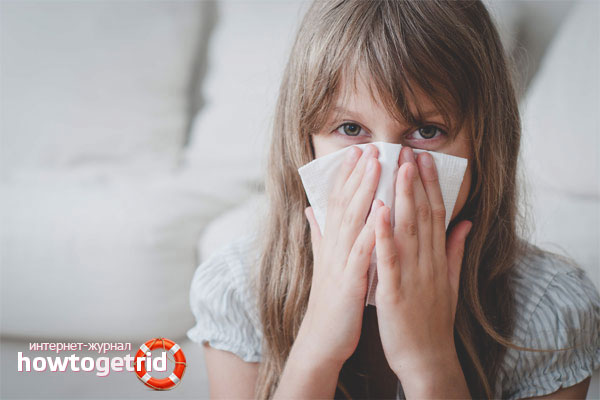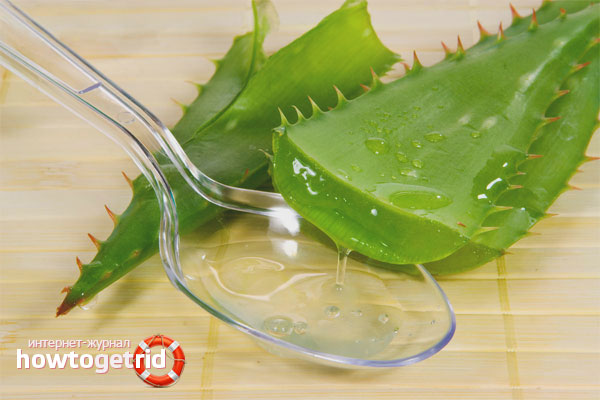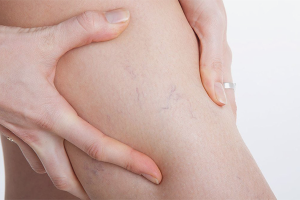The content of the article
Very often, a runny nose is accompanied by fever, weakness, and headache. Many do not suspect that these are symptoms of sinusitis - a disease that requires serious treatment, and in case of its complication leads to serious consequences. It is associated with inflammatory processes in the sinuses.
Causes of sinusitis
Sinusitis occurs against an untreated chronic runny nose. The infection enters the nasal cavity, the mucous membrane swells, breathing is disturbed. The disease can occur against the background of:
- low immunity;
- parasitic infections;
- prolonged chronic disease;
- allergies
- ARI.
Often sinusitis can occur due to staphylococcal infection. The main causes of sinusitis include:
- mucosal injury;
- untreated caries;
- impaired secretory function;
- damage to the nasal septum;
- fungal infection of the nasal mucosa;
- hypothermia;
- complication of the flu.
One of the reasons for the development of sinusitis is the frequent and prolonged use of vasoconstrictor drops. The patient becomes addicted to them and as a result - constant swelling of the mucosa. For this reason, pus accumulates in the sinuses, and its outflow is difficult. Thus, a favorable environment is created for the propagation of pathogenic microorganisms, including staphylococcus aureus.
Symptoms of the disease
The main symptoms of the disease include: nasal congestion, profuse purulent discharge from the sinuses, headaches. Also, pains are felt in the nose, which begin to appear in the morning and intensify in the evening. During the acute process, body temperature rises. Due to the fact that nasal breathing is impaired, appetite decreases and sleep is lost.
Symptoms of sinusitis:
- respiratory failure;
- mucous and purulent discharge from the nose;
- chills;
- headache;
- weakness;
- coughing attacks;
- fatigue
- sleep disturbance;
- loss of appetite;
- when tilted, pain appears in the forehead and nose;
- loss of smell;
- watery eyes;
- violation of taste.
Types of sinusitis
Depending on the origin of the disease and the location of the lesion, the following types of sinusitis are distinguished:
- Unilateral. It develops against the background of the inflammatory process. Pathogens are pathogenic microorganisms: E. coli, streptococcus, staphylococcus. Before proceeding with the treatment of sinusitis of this form, it is necessary to identify its nature and begin appropriate antibacterial therapy.
- Double sided. It occurs due to inflammation of the nasal mucosa and maxillary sinuses. At first, the disease proceeds in an acute form, if treatment has not been carried out, it goes into the chronic stage.
- Acute. The patient complains of weakness and headache. The temperature rises and the discharge from the nose increases, which is light at the initial stage, then acquire a yellow or green color.
- Chronic. The stage of remission from time to time is replaced by an acute phase, during which inflammation of organs adjacent to the maxillary sinuses can occur. The causative agents of this form of the disease are fungi, bacteria and viruses. They can linger in the maxillary sinuses due to defects in the nasal septum or from damage to the integrity of the tissues of the mucosa.
- Catarrhal. Patients have edema and redness of the mucosa. The disease is accompanied by profuse discharge from the sinuses. The nasal mucosa becomes inflamed. The reason for this can be: untreated viral infections and flu, mechanical damage to the mucosa, allergic rhinitis.
- Purulent.This form of the disease is a complication of colds, viral or infectious diseases. Often purulent sinusitis is a complication of an acute disease, in cases where the patient, instead of seeking advice from a qualified specialist, was engaged in independent treatment.
- Polypous. This form of sinusitis is treated exclusively by the surgical method, it is impossible to get rid of the disease with the help of drugs. In the nasal passages appear neoplasms that block the access of air. This phenomenon occurs in cases where the patient has a history of diseases: allergies, congenital septal pathologies, and sinus inflammation. The patient has difficulty breathing, he begins to breathe through his mouth. Purulent mucus of yellow or green color is constantly released from the nose. It is impossible to cure this disease at home: inpatient treatment is required.
- Allergic. This disease is accompanied by swelling of the mucosa, secretion of transparent mucus from the nose, pain in the forehead, eyeballs, nasal septum. Allergic sinusitis is complicated by the formation of polyps, which leads to surgical treatment in the future. To treat this type of disease, it is necessary first of all to identify the allergen and exclude contact with it.
Sinusitis treatment
It is very difficult to cure sinusitis at home, and some forms of the disease do not respond to conservative treatment at all, for example, polypous sinusitis. Therefore, a thorough diagnosis of the disease and an accurate diagnosis is necessary.
For diagnosis, an x-ray of the sinuses or computed tomography is performed. In the picture, the doctor sees the degree of lesion of the maxillary sinuses and the site of inflammation.
For the effective treatment of sinusitis at home, the following rules should be observed:
Identification and elimination of the cause of sinusitis. The doctor prescribes methods for examining the patient and drugs whose action is aimed at combating the causative agent of the disease. The foci of infection are treated with drugs. These medicines include:
- antimicrobial;
- antibacterial;
- antifungal;
- antiallergic;
- antiseptic.
It is necessary to remove the inflammation of the sinuses and establish drainage. To do this, rinse the sinuses and applications with drugs that have effects for drawing out purulent contents.
For washing the nose are used:
- saline solutions;
- decoctions of chamomile, St. John's wort, sage, cyclamen;
- propolis infusion, sophora.
For drainage are used:
- cotton swabs with honey;
- Aloe and Kalanchoe extract.
In a hospital, they make a puncture of the maxillary sinus, pump out its purulent contents and fill the sinus with antiseptic solutions.
Warming from sinusitis
At home, you can apply many different methods for warming the nose.
Important. Warming up can not be used during the acute phase of the disease, since heating up the inflamed sinuses can lead to infection of the whole body. Warming is applied in those cases when the sinuses are cleansed of purulent contents.
Salt Warming
In this way, many generations are cured of the unpleasant symptoms of sinusitis. To prepare a thermal compress with salt, you need to take a canvas bag. Ordinary table salt is heated in a frying pan and immediately poured into a bag, which is wrapped with a towel and applied to the sinuses. The compress should be held for at least 15 minutes.
Boiled Egg Compress
For the compress, you need to boil hard-boiled 2 eggs, wrap them in towels. Place eggs wrapped in a towel on both sides of the nose in the maxillary sinuses. Keep until they cool.
Compress with a decoction of bay leaves
Put several bay leaves in boiling water, boil for 1 minute. In a warm infusion of bay leaves, wet the fabric.Apply a warm compress to the maxillary sinus and forehead area. Top with a towel. Hold the compress until it cools. Then apply a new compress. The course of treatment is at least a week.
Steam inhalation of boiled potatoes
Boil potatoes and drain the water. Until the potatoes have cooled, you need to breathe it in pairs over the pan, covered with a blanket. You need to breathe alternately with your nose and mouth for 20 minutes.
Quartz
The blue rays of quartz can destroy bacteria and viruses. Such therapy is used in the complex treatment of sinusitis. For the procedure, special directional lamps are used.
Patients with sinusitis in the acute phase are not recommended to visit the bath and sauna. You can soar your feet, do foot baths with mustard and essential oils.
Folk remedies for sinusitis
Recipes of traditional medicine will help to cope with some symptoms of the disease, reduce swelling, and reduce pain.
Propolis tincture
Wet cotton buds in propolis tincture and insert them into both nostrils. Withstand the medicine for 10 minutes. The more often this procedure is done, the greater the effect you can achieve. Such treatment is used in combination with eucalyptus oil, which lubricates the mucous membrane at night to facilitate the passage of mucus from the nose.
You can do inhalation with tincture of propolis. Drop a few drops into a steam inhaler and inhale the vapors of propolis for 10 minutes.
Bow
Onions need to be chopped and placed in cheesecloth. Breathe onions for 20 minutes. As a side effect, a burning sensation of the mucosa may occur, which after a while passes. Simultaneously with such inhalations, it is recommended to massage the sinuses of the nose, with light circular movements, first 10 times clockwise, then the same amount against. Onion is a good antiseptic, it kills germs and promotes the discharge of mucus.
Kalanchoe
This famous houseplant with bright colors has healing properties. It uses its juice, which is effective for the treatment of colds. After instillation of Kalanchoe juice in the sinuses, a person begins to sneeze, swelling of the mucous membrane is removed and pus is excreted, due to which breathing is facilitated. Juice can be used in pure form and in composition with other components, for example, with honey.
Horseradish
The root of this plant is used as an internal medicine for sinusitis. To prepare the medicine, the peeled horseradish root needs to be chopped, mixed with freshly squeezed juice of two lemons. Insist and take inside a teaspoon several times a day. The duration of treatment is at least a month.
Sea buckthorn oil
The product has healing and anti-inflammatory properties. It is buried pure in the nose.
Treatment of sinusitis should be started on time, otherwise this disease can lead to serious consequences. Folk remedies are very effective in treating this disease, but we must not forget that before starting any treatment, you need to consult a doctor.
Video: how to permanently forget about a runny nose and sinusitis














Submit